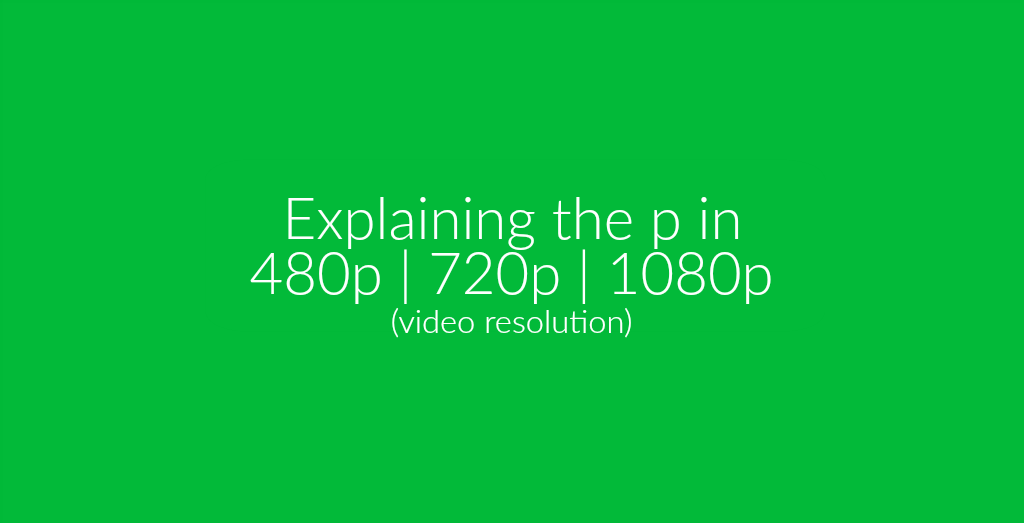
When you are editing and saving videos, you might have seem them before; numbers with a little p behind them. Even when you are just a casual YouTube watcher, you must have seen them before when checking the quality settings of the video you are watching. This already gives you a hint for what these numbers stand for: they are display or video resolutions.
The most common video resolutions you will come across today are 480p, 720p, 1080p or 2160p.
But what does that mean? What does the p stand for? We have the answer!
What Is The p In Screen Resolutions?
In short, p stands for pixels.
In combination with the number, this designation gives you an idea of how many rows of pixels – from top to bottom – are contained in a video, TV set or screen. In case of High Definition (HD) for example, it means that videos or TV sets in HD typically have 720 rows of pixels, since it is referred to as 720p.
Subsequently, this explains the better resolution or “image” of HD screens compared to SD, or 4K compared to HD. Videos shot in 4K have a resolution of 2160p, meaning there are 2160 rows of pixels compared to only 720 rows of pixels in HD.
Here’s a quick overview of the most common resolutions:
- SD: 480p / 576p
- HD: 720p / 1080p
- 4K: 2160p
- 8K: 4320p
Read more about the difference between SD, HQ, HD & 4K.
And what is 1080i?
The i here stands for interlaced. Videos recorded or shot in 1080i have a set frame rate of 60 frames per second, creating duplicated frames that are displayed separately. However, they are displayed faster than the human eye can notice.
The disadvantage of 1080i is that, in fast moving scenes, the shots may appear blurry or flickering. Thus, when compared directly, 1080p is preferred over 1080i.
